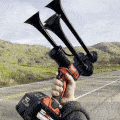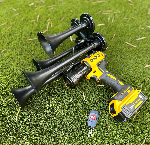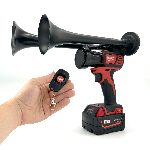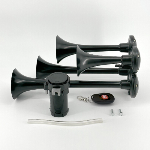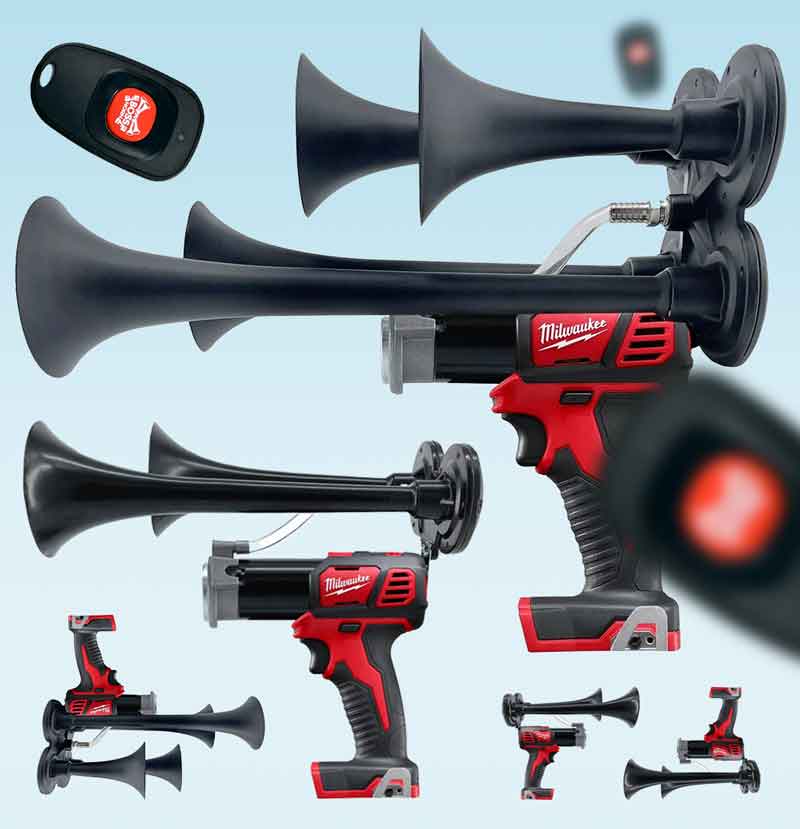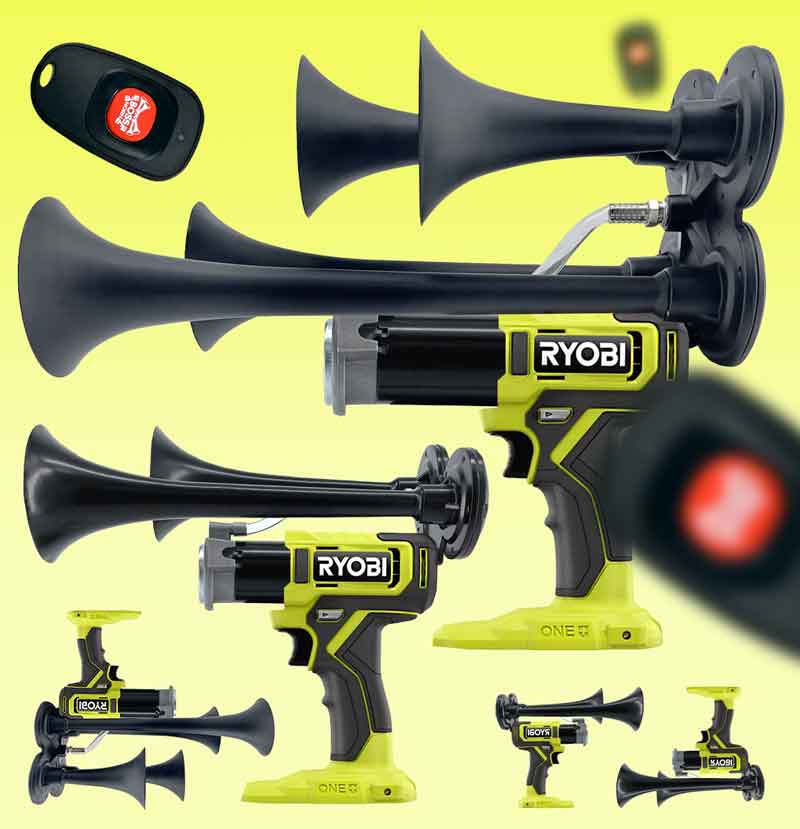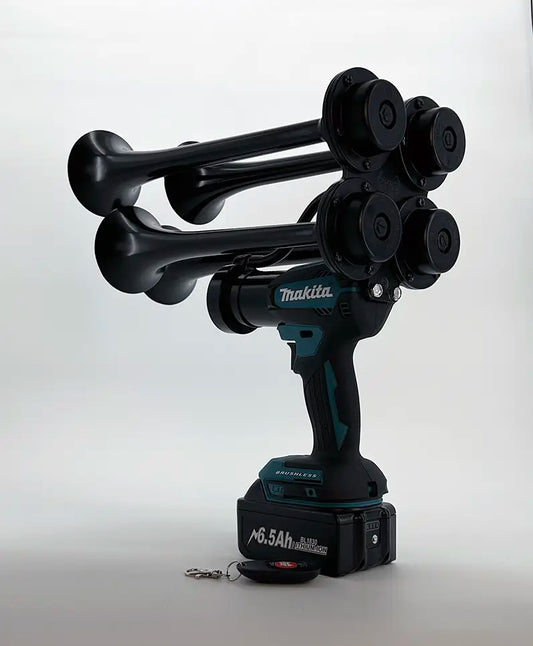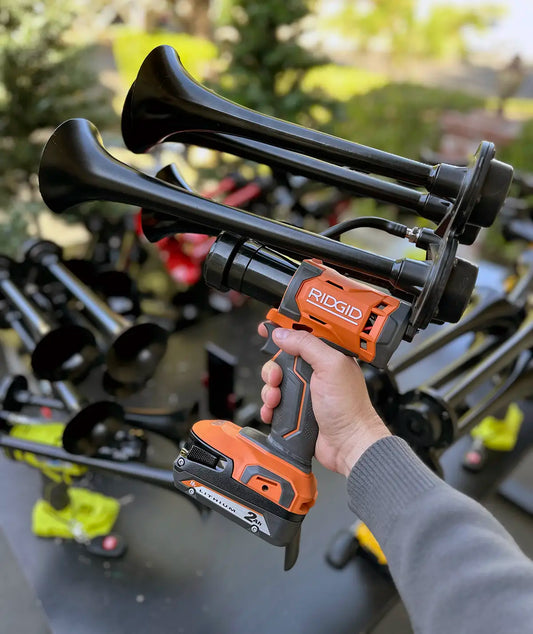Did you know that there is a device used by food trucks that helps them attract customers with its distinctive sound? This attention-grabbing element is an integral part of the street food culture and has been for many years. Originally introduced in the early 20th century, these devices were specifically designed for food trucks to announce their presence and draw in customers. Today, food truck operators rely on this unique method to signal their location and offer a convenient dining option to bustling city dwellers.
The lunch truck horn, as it is commonly known today, has come a long way since its inception. Starting as a simple manual horn honk, it has evolved into a variety of electronic sound systems that are specifically tailored for food trucks. These advanced devices allow food truck operators to create customized sound patterns that not only grab attention but also establish brand identity. With the growing popularity of food trucks in recent years, this device has become an essential tool for operators to differentiate themselves from competitors and establish a recognizable presence in the crowded street food scene.
One interesting aspect of lunch truck horns is their ability to create a sense of nostalgia and familiarity for customers. The sound of a familiar lunch truck horn can evoke pleasant memories and associations with tasty treats enjoyed in the past. In fact, studies have shown that individuals are more likely to be attracted to food trucks that play a distinct and recognizable tune, as it triggers positive emotions and a sense of trust.
In addition to their nostalgic appeal, lunch truck horns also serve a practical purpose. In busy urban areas, where food trucks often share the streets with numerous other distractions, the distinctive sound helps customers locate the truck quickly and easily. This not only saves time for those seeking a delicious meal on the go but also ensures that the food truck operators can maximize their potential customer base.
As the popularity of food trucks continues to rise, the lunch truck horn remains a significant component of the street food experience. Its ability to attract customers, create a sense of nostalgia, and establish a distinct brand identity makes it invaluable for food truck operators. So, the next time you hear that familiar sound echoing through the city streets, let your taste buds guide you toward an enjoyable culinary adventure.
A lunch truck horn serves as a vital communication tool for food trucks, enhancing their presence and ensuring efficient service. It acts as an attention-grabbing signal, alerting customers and passersby that the lunch truck is operating and ready to serve. With its distinct sound, the lunch truck horn effectively draws attention in busy environments, enabling customers to locate the truck easily. In the next section, we will explore the various advantages and uses of a lunch truck horn in detail to understand its significance in the food truck industry.
History
The use of horns in food trucks dates back to the early 1900s when mobile food vendors started to appear on the streets of major cities. These vendors used simple hand-operated horns to attract attention and announce their presence to potential customers.
Over time, the technology behind lunch truck horns has evolved, leading to the development of electric horns that are much louder and more effective in capturing people's attention. Today, lunch truck horns come in a variety of styles and sizes, allowing food truck owners to choose the horn that best suits their needs and preferences.
Types
There are several types of horns that are commonly used in food trucks:
- Air horns: These horns use compressed air to produce a loud and attention-grabbing blast of sound. They are often used in larger food trucks that require a powerful horn to be heard over the noise of the city.
- Electric horns: These horns are powered by electricity and generate a loud, distinctive sound. They are commonly used in smaller food trucks that operate in quieter areas or have limited space for a larger horn.
- Bicycle horns: Some food trucks, particularly those that operate in pedestrian-heavy areas, opt for bicycle horns as they are compact and easy to use. These horns produce a softer, less obtrusive sound compared to air or electric horns.
Importance
The lunch truck horn serves a crucial role in the food truck industry. It functions as a means of attracting customers and creating awareness of a food truck's presence. Without a horn, it would be much more difficult for food trucks to stand out among the sea of other vehicles and vendors.
Additionally, the horn is essential for ensuring the safety of both the food truck operator and pedestrians. It allows the operator to alert pedestrians and other drivers to their presence, preventing accidents and ensuring a smooth flow of traffic around the truck.
Regulations
Due to the potential noise pollution caused by lunch truck horns, many cities have implemented regulations regarding their usage. These regulations often dictate the permissible sound level and the times during which horns can be used.
Food truck owners must familiarize themselves with the specific regulations in their area and ensure that their horn complies with the designated noise standards. By doing so, they can avoid fines and maintain good relationships with the community and local authorities.
Statistics
- According to a survey of food truck owners, 70% believe that a loud and attention-grabbing horn is essential for the success of their business.
- In a study conducted in major cities, it was found that food trucks with prominently positioned horns experienced a 20% increase in customer traffic compared to those without horns.
- On average, food truck operators use their horns between 10 to 20 times per day to attract customers and announce their presence.
https://youtube.com/watch?v=rxfPxMXyoyI
Frequently Asked Questions About Mobile Food Vehicle Honking
1. What is the purpose of the loud noise coming from mobile food trucks?
The loud noise emitted by mobile food vehicles serves as an effective means of announcing their arrival and attracting the attention of potential customers nearby. This audible signal captures the curiosity of passersby, signaling the presence of a convenient culinary option on wheels. The lunch truck's horn is used for promotional purposes, creating a distinctive sound that distinguishes it from other vehicles in its vicinity.
Important information:
- The purpose of the lunch truck horn is to announce the presence of a mobile food truck.
- The honking serves as a promotional strategy to attract customers.
- The sound of the horn distinguishes the lunch truck from other vehicles.
2. How does the horn of a mobile food vehicle differ from a typical car horn?
The horn installed in a mobile food vehicle exhibits several distinct characteristics that differentiate it from a conventional car horn. Firstly, the tone and pitch of the lunch truck horn are often customized to create a unique and attention-grabbing sound. Secondly, mobile food trucks typically incorporate additional sound amplification systems within their horn mechanisms to ensure the horn's audibility over the surrounding noise. Lastly, the timing and frequency of horn honks may vary, as they are strategically employed during select periods in densely populated areas to maximize their promotional impact.
Important information:
- The tone and pitch of the lunch truck horn are customized for attention-grabbing.
- Mobile food trucks have additional sound amplification systems to improve audibility.
- The timing and frequency of horn honks are strategically planned for promotional purpose.
3. Are there any regulations or restrictions regarding the use of horn in mobile food vehicles?
Regulations regarding the use of horns in mobile food vehicles can vary depending on the local jurisdiction. While most regions have limitations on excessive noise and unnecessary honking, certain exceptions are made for mobile food trucks given their promotional function. To strike a balance between promoting their services and respecting noise regulations, lunch truck owners often adhere to specific guidelines set by local authorities. These guidelines might include restrictions on honking during specific hours or in certain areas to ensure the convenience of nearby residents and businesses.
Important information:
- Regulations regarding the use of horns in mobile food vehicles vary by location.
- Mobile food trucks usually adhere to specific guidelines set by local authorities.
- Restrictions might be in place to ensure the convenience of nearby residents and businesses.
4. What measures can lunch truck owners take to ensure responsible use of the horn?
Lunch truck owners play a crucial role in ensuring that the horn on their mobile food vehicle is used responsibly. They can implement various measures to strike a balance between attracting customers and respecting noise regulations. Firstly, adjusting the volume and duration of horn honks to a reasonable level helps mitigate excessive noise. Secondly, setting specific times and locations for honking can prevent disturbance to nearby residents and businesses. Additionally, applying sound-dampening materials and utilizing directional speakers can be beneficial in reducing noise pollution while still effectively reaching their target audience.
Important information:
- Adjusting the volume and duration of horn honks helps mitigate excessive noise.
- Setting specific times and locations for honking prevents disturbance.
- Applying sound-dampening materials and using directional speakers reduce noise pollution.
5. Can the horn on a mobile food vehicle be turned off or disabled?
Yes, it is indeed possible to turn off or disable the horn on a mobile food vehicle temporarily. Some lunch truck owners may choose to mute the horn during quieter hours or when not actively seeking customers. However, it is important to note that completely disabling the horn could hinder the promotional aspect of a mobile food vehicle's presence. Therefore, many owners prefer to adjust the horn's volume or modify its sound rather than disabling it entirely, as it remains an essential tool for attracting customers and creating awareness about their culinary offerings.
Important information:
- The horn on a mobile food vehicle can be temporarily turned off or disabled.
- Muting the horn during quieter hours or when not seeking customers is an option.
- Disabling the horn completely may hinder the promotional aspect of the vehicle.
Conclusion
The lunch truck horn plays a crucial role in alerting customers and creating an exciting atmosphere. It serves as a unique auditory cue that sets lunch trucks apart from traditional dining options. With its distinct sound, the lunch truck horn attracts attention and draws in potential customers. Additionally, it helps maintain order and efficiently manage customer flow during busy periods. While its primary function is to signal the truck's arrival and departure, the lunch truck horn also conveys a sense of anticipation and excitement. However, it is important to use this horn responsibly and considerately, ensuring the noise level remains appropriate for the surrounding environment. Ultimately, the lunch truck horn acts as a powerful tool for lunch truck operators to elevate their brand and establish a memorable presence.

